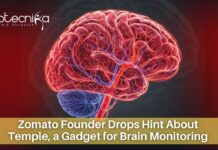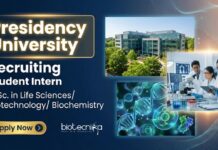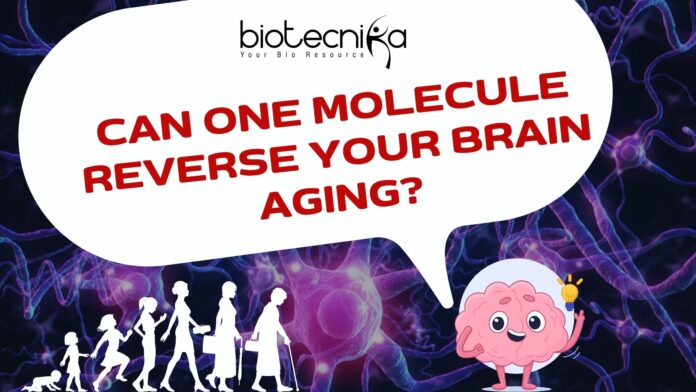The Reverse Brain Aging Protein: Can One Molecule Rewind Your Mind’s Clock?
Aging is a universal truth of life. We witness the impact of aging in subtle ways, such as a forgotten name, a slowing of sharp reflexes, or a moment of hesitation before recalling a familiar place. For ages, Science has accepted aging as a part of the natural process, something that can never truly be reversed but can be managed.
However, this long-held belief is now being challenged by an innovation that could revolutionize our understanding of the aging brain. Some renowned Scientists at the University of California, San Francisco (UCSF) have developed a method to restore learning abilities and memory in older mice by targeting a specific single gene. They have uncovered what they call the reverse brain aging protein. The innovation slows decline, as well as suggests the possibility of reclaiming functions thought to be permanently lost. Millions of people fear the aging effects; hence, this innovative Research shines a light on a future where growing older may no longer mean losing memories or one’s sense of self.
Aging has been associated with reduced reflexes, slower learning, as well as memory loss since ancient times. But what if one protein could explain much of this age decline? The Research at UCSF has identified “FTL1” as a key driver of brain aging and has shown how reducing its levels could restore youthful brain functioning.
The Hippocampus & The Aging Brain
The part of the brain central to learning and memory, the Hippocampus, is among the brain regions that are most affected by aging. As neurons lose their ability to adapt and connect, cognitive functions eventually decline. To understand why, UCSF Scientists compared the proteins and genes in the hippocampus of young as well as old mice.
The results were breathtaking; younger mice exhibited significantly lower levels of FTL1, while older mice had substantially higher levels of FTL1. This suggested that the protein could be at the heart of age-related brain deterioration.
FTL1 – A Molecular Culprit
To test FTL1’s role, Researchers conducted two important experiments, which are:
- Increasing FTL1 in young mice: Their brains began to mimic those of older animals, with impaired performance in memory tasks and fewer synaptic connections. In laboratory studies, neurons producing excess FTL1 formed simple, one-armed neurites instead of the branching networks typical of healthy brain cells.
- Reducing FTL1 in old mice: The results were even more remarkable. Older animals regained neural connectivity, their hippocampal neurons grew more complex structures, and they performed better in cognitive tests than they did earlier.
These experiments highlighted that “FTL1” was not only associated with aging but also directly responsible for accelerating cognitive decline.
Impact on Brain Metabolism
This extraordinary Research further showcased that FTL1 slows down cellular metabolism in the Hippocampus region of the brain. A metabolic slowdown deprives neurons of the energy necessary to repair damage and function properly. However, Researchers discovered that treating cells with a compound that boosts metabolism effectively prevented the harmful effects of FTL1.
It also highlighted the dual potential for therapies: directly targeting FTL1 while supporting healthy cellular metabolism.
A Step Toward Reversing Brain Aging
What makes this Research truly groundbreaking is not just the identification of the reverse brain aging protein, but also its potential for reversing age-related impairments. The possibility of reversing cognitive decline, rather than just delaying or preventing symptoms, is a concept that has long eluded the field of aging Research.
“It is truly a reversal of impairments. It’s much more than merely delaying or preventing symptoms,” said Saul Villeda, PhD, associate director of the UCSF Bakar Aging Research Institute and senior author of the paper, in a statement.
This highlights that lowering FTL1 not only slows decline but can also actively restore lost brain function, making the finding more potent than simply preventing decline.
By showcasing that reducing FTL1 in older mice can restore memory and learning ability, this innovative Research provides a promising glimpse into potential treatments that could help human beings maintain sharper cognitive functions as they age.
Looking Ahead
While the current findings are limited to mice, the discovery of FTL1 represents a significant advancement in the field of aging research. If similar results are observed in humans, it could pave the way for therapies that block or reduce FTL1 activity, potentially helping people combat cognitive decline and memory loss associated with aging.
“We’re seeing more opportunities to alleviate the worst consequences of old age. It’s a hopeful time to be working on the biology of aging,” Villeda said. This shows the optimism that discoveries in Aging Biology are moving closer to real-world solutions.
For now, the research offers a powerful insight: the aging brain may not be destined to decline irreversibly. With continued progress, Scientists may one day unlock treatments to preserve or even restore youthful brain function.
Quick Facts & Glimpse: The FTL1 Discovery
- What is FTL1? FTL1 is a protein that is found in higher amounts in older brains, particularly in the Hippocampus region. Elevated levels of FTL1 have been shown to disrupt brain cell connections, impair memory, and slow metabolism, making it a potential target for therapies aimed at preventing or reversing cognitive decline.
- Why is it important? Elevated FTL1 disrupts brain cell connections, impairs memory, and slows metabolism.
- What did UCSF researchers find? Lowering FTL1 in old mice restored neural connectivity and memory.
- Can it be treated? Boosting cell metabolism countered the adverse effects of FTL1 in laboratory experiments.
Future outlook: Potential therapies may one day target FTL1 to prevent or reverse cognitive decline in humans.























